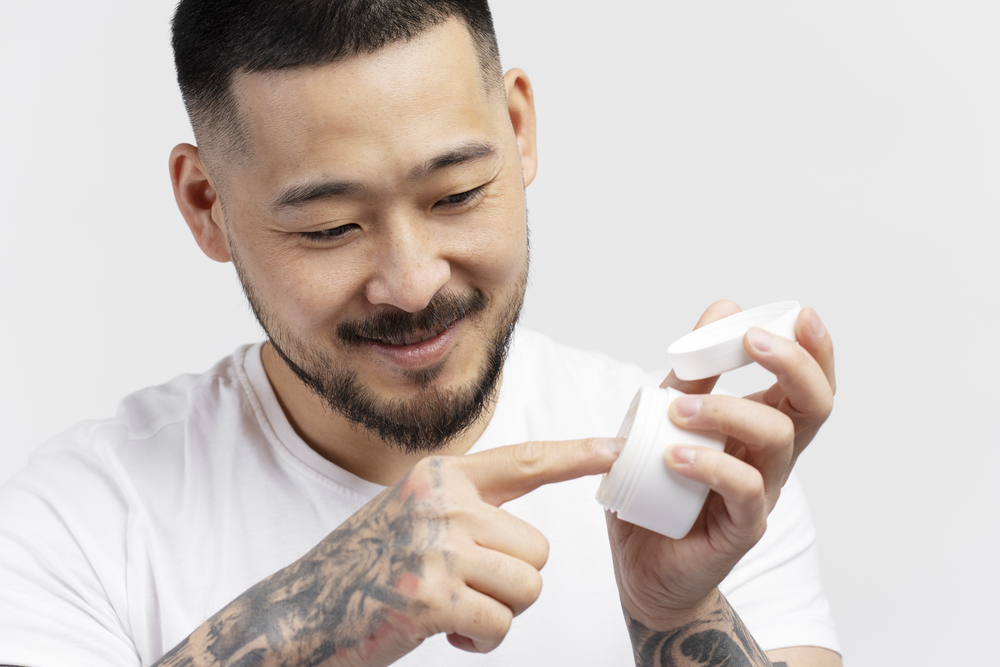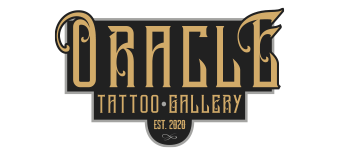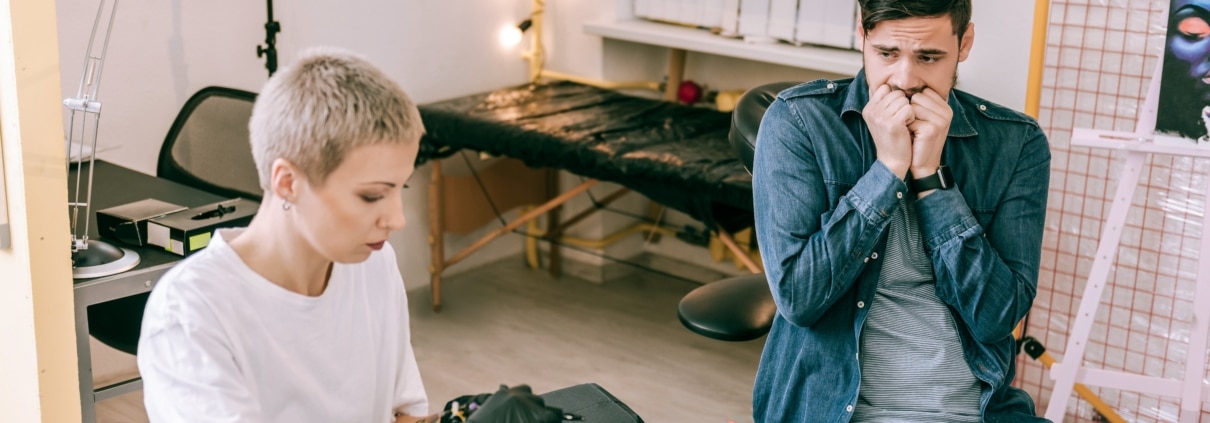Secrets to Minimizing Tattoo Pain: What You Need to Know?
Getting a tattoo is a significant decision, and the process can be an exhilarating and meaningful experience. However, many people are concerned about one common aspect: the pain involved.
While it’s true that tattoos can hurt, there are several ways to minimize discomfort and make the experience much more bearable.
Whether you’re a first-timer or someone returning for more ink, knowing how to minimize pain during a tattoo can transform your session into something more enjoyable and less stressful.
Understanding Tattoo Pain: What You Should Know?
The sensation of pain during a tattoo varies from person to person, as pain tolerance levels differ. The design, size, placement, and duration of the tattoo also impact the amount of pain one feels. Areas with more nerve endings or thinner skin tend to be more sensitive. For instance, tattoos on the ribs, feet, and hands may hurt more than those on less sensitive areas like the upper arm or thigh.
Recognizing these factors allows you to prepare yourself mentally and physically for the procedure. Tattoo pain is often described as a sharp or burning sensation, but the good news is that it’s generally manageable. Understanding what to expect makes it easier to employ techniques to reduce discomfort.
Related Topic: How Old Do You Have To Be To Get A Tattoo?
Choose the Right Tattoo Artist for Pain Management
Your choice of tattoo artist plays a pivotal role in managing pain during your session. An experienced and skilled artist knows how to handle the needle in a way that minimizes trauma to the skin. They also have an understanding of their client’s comfort and may adjust their pace or give you breaks when necessary.
It’s crucial to communicate openly with your artist. Let them know your pain tolerance and if you have any concerns. Many professionals are accustomed to working with clients who may be anxious about pain and will take steps to make the experience as smooth as possible.
Stay Hydrated and Nourished Before Your Tattoo Session
Staying hydrated before your tattoo is a simple yet often overlooked way to reduce pain. When your skin is well-hydrated, it becomes more pliable, making it easier for the needle to penetrate and causing less discomfort. Drinking plenty of water in the days leading up to your appointment ensures that your skin is in its best possible condition.
Equally important is having a proper meal before your session. Low blood sugar can make you more sensitive to pain, and skipping meals might even make you feel lightheaded or faint. Eating a healthy, balanced meal can help maintain your energy levels, improving your tolerance to pain.
Manage Tattoo Pain with Over-the-Counter Pain Relievers
Taking a non-prescription pain reliever such as ibuprofen or acetaminophen about 30 minutes before your tattoo session can help reduce discomfort. These medications are anti-inflammatory, which means they can lessen the swelling and soreness that accompanies a tattoo. However, avoid aspirin as it thins the blood, increasing the risk of bleeding during the process.
Be sure to check with your artist before using any medication, as some may have preferences or restrictions based on their professional experience.
Related Topic: How Long Do Stick and Poke Tattoos Last?
Numbing Creams and Gels: Do They Work?
Numbing creams and gels are topical anesthetics designed to reduce pain by desensitizing the skin. Many tattoo artists are open to using them, though some might prefer not to for various reasons, such as how the skin reacts to them. These products typically contain lidocaine, a common anesthetic, and can significantly reduce the initial pain when the tattoo starts.

It’s essential to apply these products correctly. Most require you to apply them to the skin about an hour before the session to allow the numbing effect to kick in. Be sure to consult with your tattoo artist beforehand, as they may recommend specific brands or methods of application that won’t interfere with the tattooing process.
Take Breaks During Your Tattoo Session
If your tattoo is large or particularly painful, ask your artist if you can take short breaks. Breaks give your body time to adjust to the pain and recover before continuing. However, keep in mind that taking too many breaks can make the session longer, which might increase your overall discomfort. Striking a balance is key.
Some artists also recommend deep-breathing exercises during breaks. Focusing on slow, steady breathing helps to calm your nerves and reduce your perception of pain.
Distractions: Keeping Your Mind Off the Pain
One of the best ways to manage pain during a tattoo is to distract yourself. Bring headphones and listen to your favorite music, podcast, or audiobook during the session. Some people even bring a friend for support, though it’s important to check with your artist beforehand to ensure they allow guests in the tattooing area.
Focusing on something other than the needle can make the session pass faster and lessen the overall perception of pain. Many people find that after the first few minutes, they adjust to the sensation, and the pain becomes more manageable.
Tattoo Placement: Choosing Less Painful Areas
Not all body parts are created equal when it comes to tattoo pain. Certain areas with thicker skin and fewer nerve endings tend to hurt less, making them ideal for beginners or those with a low pain tolerance. These areas include:
- Upper arm
- Thighs
- Calves
- Shoulders
Avoid areas with thin skin, high nerve density, or proximity to bone, such as the ribs, ankles, or spine, if you’re particularly concerned about pain.
Consider the Size and Complexity of Your Tattoo
Larger, more detailed tattoos take longer to complete and are typically more painful. If you’re getting your first tattoo, consider starting with a smaller, simpler design. This way, you can gauge how your body reacts to the process and decide if you’re comfortable with longer sessions for future tattoos.
A smaller design may also require fewer passes with the needle, leading to less skin irritation and shorter healing times.
Mental Preparation: Staying Calm and Positive
Much of tattoo pain management comes down to mental attitude. If you go into the session expecting unbearable pain, you might increase your anxiety, which can heighten your perception of discomfort. On the other hand, staying calm and positive can reduce stress, making the pain more manageable.
Practicing relaxation techniques before and during your session can make a significant difference. Deep breathing, meditation, or even visualization exercises can help keep you focused and reduce tension in your muscles, which in turn decreases pain.
Avoid Alcohol and Caffeine Before Getting a Tattoo
It might be tempting to have a drink to calm your nerves before a tattoo, but alcohol can thin your blood, leading to increased bleeding and swelling during the process. This can make the experience more painful and harder for your artist to work. Additionally, excessive bleeding can interfere with the final look of the tattoo.
Similarly, caffeine should be avoided as it can heighten your sensitivity to pain and make you more jittery, making it difficult to sit still during the session. Stick to water and a healthy meal instead.
Related Topic: What are the Best Tattoo Colors for Pale Skin?
Tattoo Aftercare: Reducing Pain and Ensuring Proper Healing
The pain doesn’t end when your tattoo session is over. The aftercare process is crucial for minimizing post-tattoo pain and ensuring your skin heals properly. Following your artist’s instructions for aftercare will help reduce irritation and the risk of infection, which can increase discomfort. Here are some key steps to follow:
- Keep it clean: Wash the tattoo gently with unscented soap and lukewarm water.
- Moisturize: Use a recommended ointment to keep the tattoo moisturized and prevent scabbing.
- Avoid sun exposure: Keep the tattoo out of direct sunlight while it heals.
- Stay hydrated: Drinking plenty of water helps your skin heal faster.
Proper aftercare not only reduces pain but also ensures that your tattoo looks as vibrant and healthy as possible once it’s fully healed.
Final Thoughts: Can Tattoos Be Pain-Free?
Achieving a completely pain-free tattoo is unlikely, but by applying the strategies discussed, you can significantly reduce discomfort during the process.
Pain tolerance varies from person to person, but with proper preparation both mentally and physically you can ensure a smoother and more manageable tattoo experience.
By choosing the right tattoo artist, such as the experts at Oracle Tattoo Gallery, and following recommended pain management techniques, you can focus less on the discomfort and more on the result: a stunning piece of body art that you’ll cherish for years of come.
Related Topic: How to Choose The Right Measurements for Your Tattoo?
FAQs
What are the most painful areas to get a tattoo?
The most painful areas for a tattoo are typically those with more nerve endings, thinner skin, or proximity to bone, such as the ribs, feet, hands, spine, and ankles.
Can I use numbing cream for tattoos?
Yes, many numbing creams and gels are designed to reduce pain during a tattoo. However, it’s essential to consult with your artist before using any products, as some may interfere with the tattooing process.
Does drinking water help with tattoo pain?
Staying hydrated before and during a tattoo can help make your skin more supple, reducing discomfort. Proper hydration is key to ensuring that your skin responds well to the tattooing process.
Is it a good idea to eat before getting a tattoo?
Yes, eating a healthy meal before your session helps maintain energy levels and reduces sensitivity to pain. Low blood sugar can increase discomfort and make you feel lightheaded.
How long does tattoo pain last?
Tattoo pain is most intense during the session, but mild soreness can last for several days afterward. Proper aftercare can reduce post-session pain and promote faster healing.



